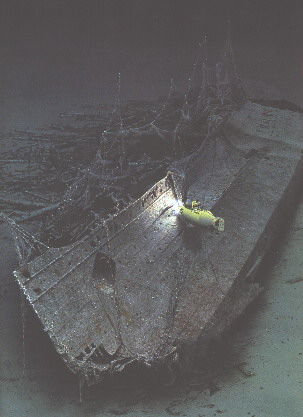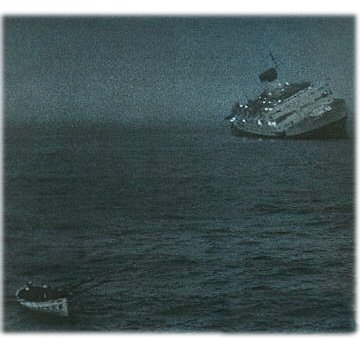
The world before World War I was a unique one. It was the Edwardian era. Man's knowledge of technology was conquering the world, sprocket by sprocket, nail by nail.
At the turn of the 20th century, man could fly in airplanes, send messages across the ocean, talk on the phone and produce mass quantities of products.
Man felt he could conquer the ocean as well.
In 1912, a new type of ocean-going vessel was launched into the world. The White Star Line's Titanic, along with the Olympic, was built to be the last word in sea travel. The Titanic was hailed a technological marvel, with four giant engines, electrical lights, elevators, a Veranda cafe, and a host of other grandiose materials that made the ship a beauty to behold.
As has been told and retold now for almost 100 years, the Titanic struck an iceberg and sank, taking more than 1,500 to their deaths. The shipbuilders had so much confidence in the ship, they labeled it "unsinkable" and, to cut costs, installed only enough lifeboats for less than half the passengers and crew.
Since then, the Titanic has sailed into legend in books, television shows and movies. It is unarguably the most famous shipwreck of all.

After the outbreak of World War I, the Germans issued warnings for anyone traveling the seas on ships flying enemy flags could be subjected to destruction.
In May of 1915, the Lusitania, recipient of the Blue Ribbon award for being one of the fastest ships sailing, embarked toward England from New York.
Just off the coast of Ireland, the Lusitania encountered U-20, a German U-boat. She was torpedoed and sank, killing more than 1,200 passengers and crew.
The incident brought outrage toward Germany and sympathy toward the British from Americans, and eventually played a part in the United States involvement in the war.
For years afterward, there was controversy surrounding the Lusitania's alleged cargo. Some say she was carrying bombs for the British war effort, thereby justifying the Germans sinking a passenger vessel. Because of the rapid demise of the Lusitania (she sank in about 18 minutes), some say the torpedo hit the hidden bombs and exploded. Others say, Winston Churchill allowed the Lusitania to be caught by German torpedoes in get the US in the war. Divers, including the famous Dr. Robert Ballard, have explored the wreck without ever finding any war cargo. Some cargo list discovered years later say a few bullets were shipped, but hardly enough to justify its sinking.
It remains one of the most tragic events in wartime history. Many women and children died in the sinking.


On November 10, 1975, a legend of the Great Lakes was born. Unfortunately, 29 men died bringing this legend to life.
The Edmund Fitzgerald, a massive tanker, was carrying a cargo of ore across the Great Lakes during a fierce storm. The tanker, along with the crew, disappeared.
After several days of searching, the tanker was found on the sea floor, broken in two. The storm had destroyed the tanker.
Later that year, Gordon Lightfoot wrote a song called "The Wreck of the Edmund Fitzgerald" and fortified the ship's place in history.
Years later, salvagers brought up the ship's bell and, in a poignant ceremony, rang the bell 29 times to honor the ship's fallen crew.

During World War II, the USS Yorktown, an 809-ft. aircraft carrier, fought in the pivotal battle of Midway June 6, 1942. She was sank the next day.
Dr. Robert Ballard, a veteran of many sunken ship expeditions, found the lost aircraft carrier in 1998. She was lying upright at a depth of 16,650 feet in remarkably good condition. A survivor on board with Ballard remarked that the ship looked great for its condition.

On Wednesday, July 25th 1956, at 11:10pm, the Italian passenger liner , Andrea Doria and MV Stockholm, collided near Nantucket, Massachusetts. The Stockholm limped home to port, while the stricken Andrea Doria slowly sank beneath the waves.
Andrea Doria

Fifty-four passengers and crew lost their lives that night.
For years, the wreck of the Andrea Doria has been a favorite of divers, particularly Peter Gimbel.
He has made many dives to the wreck, including one 28 hours after she sank.

Back to Main Page